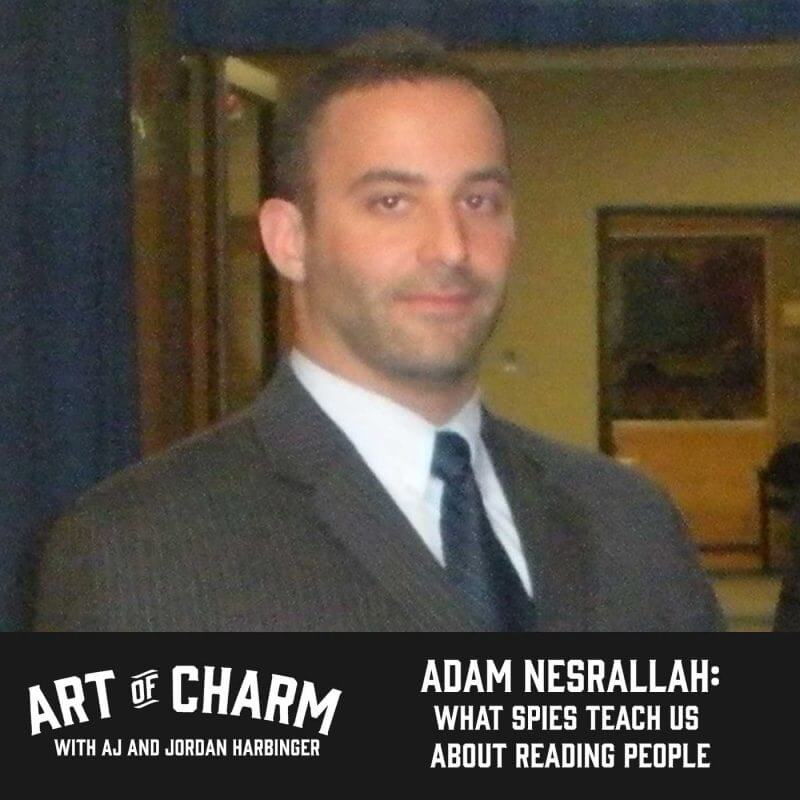Reading people takes practice.
“You’ve got two ears and one mouth; use them in proportion.” -Adam Nesrallah
The Cheat Sheet:
- Why saying “I understand” actually means you don’t.
- What is a baseline and how do you use it?
- Are lie detectors about the machine or the person handling the machine?
- How to be understood by anyone.
- What is the five second rule?
- And so much more…
[aoc-subscribe]
For the majority of us, misreading a social situation or someone’s communication is simply embarrassing or humbling, nothing more. But for Adam Nesrallah, a former Canadian spy, missing a social cue was a potentially life-threatening experience.
Adam joins us on this episode to talk about why there are no shortcuts to being a great communicator, how to read between the lines of what people are saying, and what spies teach us about reading people.
More About This Show
Adam is a former Canadian intelligence officer who co-founded the Ronin Private Intelligence. His company primarily focuses on training people in the disciplines of communication, persuasion or relationship-building. Their trainings are tailored to your particular sector.
But Adam’s know-how was forged during his time in counter-intelligence and counter-terrorism service for Canada, his home country. He learned two of the most important skills any of us can have are communication and relationship-building. If you can listen properly you can communicate in such a way as to build relationships.
And so much of communication is the in the subtext: it’s not what the person says necessarily but more of what they didn’t say and why they didn’t say it. In order to read that subtext you have to be able to read people.
Adam says purpose-driven communication like this takes finesse, practice and is a perishable thing. You have to learn it, use it and keep using it so your skills stay finely-tuned.
To hone and keep your skills sharp, pay attention to a person, their mannerisms, their responses and the environment so you can become more aware of what they are actually saying in their non-verbal communication. By listening intently and deliberately with practice and patience you’ll have a better understanding of human interaction, rapport-building and relationship-building.
Put this into practice by going to a bar or coffee shop and simply observe people there. You’ll begin to read people’s personal baselines: how they are in a normal conversation. Find out what’s normal for someone and then communicate with them in that way.
And that’s your next step after observing people: interact with them. Give yourself five seconds to build rapport, then talk with them for a few minutes to build a connection and get their contact information so you can practice building a relationship.
On today’s show Adam gives us the third and final step in this process, as well as the two types of listening in a conversation and which works best, and his personal profiling technique. Check it out on today’s episode of The Art of Charm.
THANKS, ADAM NESRALLAH!
Resources from this episode:
You’ll also like:
-The Art of Charm Toolbox
-Best of The Art of Charm Podcast
On your phone? Click here to write us a well-deserved iTunes review and help us outrank the riffraff!




